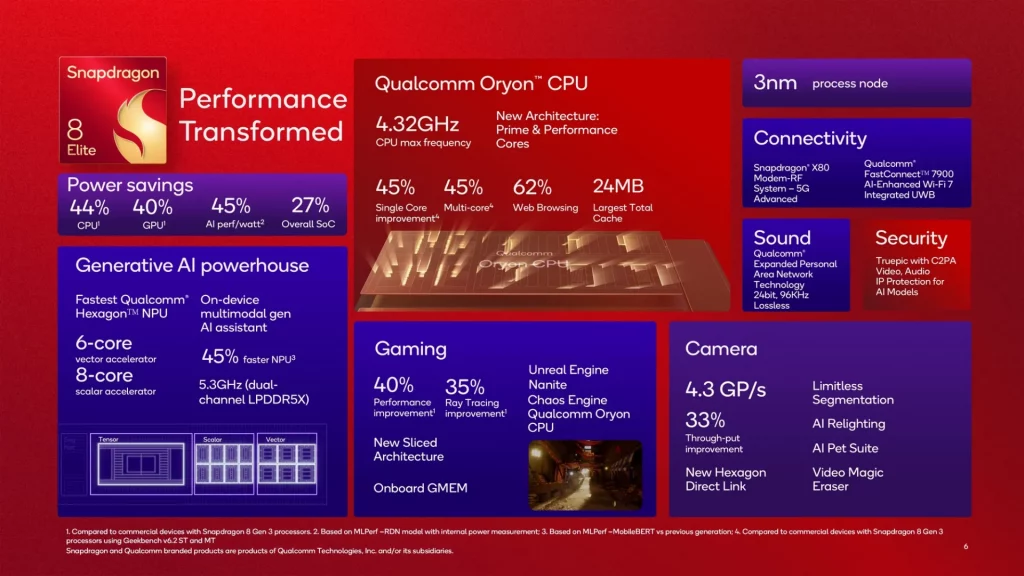It seems we’re set to witness Qualcomm’s Snapdragon X series naming scheme making its way into the smartphone market, starting with the recent announcement of the Snapdragon 8 Elite SoC.
 This unified naming strategy, which we’re likely to see more of in the coming years, features the new 8 Elite running a custom 8-core Oryon CPU, with two prime cores clocking at 4.32GHz and the remaining six at 3.53GHz.
This unified naming strategy, which we’re likely to see more of in the coming years, features the new 8 Elite running a custom 8-core Oryon CPU, with two prime cores clocking at 4.32GHz and the remaining six at 3.53GHz.
Built by TSMC on a 3nm fabrication node, it includes a 24MB L2 cache and LPDDR5X-5300 RAM, resulting in a 45% boost in CPU performance and a 44% improvement in power efficiency.
 The GPU remains an Adreno, though it’s a redesigned version that enhances ray tracing capabilities while boosting performance and optimizing power consumption.
The GPU remains an Adreno, though it’s a redesigned version that enhances ray tracing capabilities while boosting performance and optimizing power consumption.
On the AI side, the updated NPU accelerates inference by 45% and further improves power efficiency. With the Qualcomm AI Engine supporting multimodal Gen AI, it reportedly handles up to 70 tokens for SLMs.
The Snapdragon 8 Elite also marks the first mobile SoC to support Unreal Engine 5.3 and Nanite virtualized geometry.
 The upgraded image signal processor (ISP) now works more closely with the Hexagon NPU, enhancing HDR, skin tone adjustments, color accuracy, semantic segmentation, and video object eraser features.
The upgraded image signal processor (ISP) now works more closely with the Hexagon NPU, enhancing HDR, skin tone adjustments, color accuracy, semantic segmentation, and video object eraser features.
For connectivity, the Snapdragon X80 5G modem takes over with 6x downlink carrier aggregation and AI-based mmWave range extension, offering download speeds of up to 10 Gbps and theoretical upload speeds of 3.5 Gbps. The FastConnect 7900 system manages Wi-Fi 7, Bluetooth 5.4, and Ultra Wideband in a single 6nm chip.
As expected, this SoC will power upcoming Android flagships from brands like Honor, iQOO, OnePlus, OPPO, ROG, Realme, Samsung, vivo, Xiaomi, and more.






